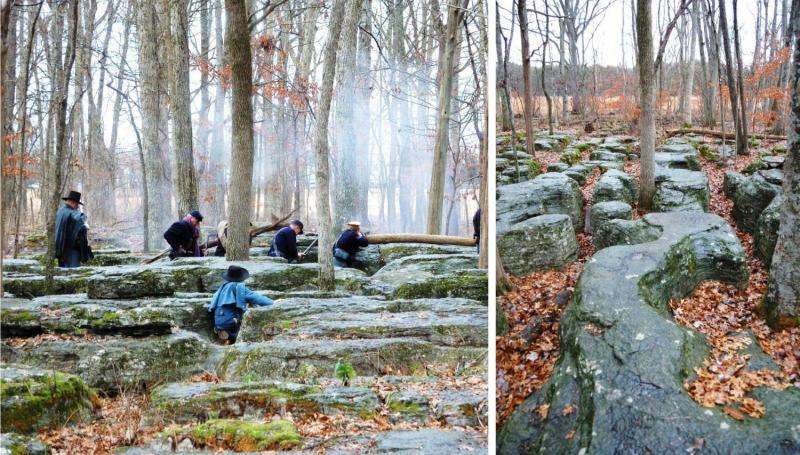How rocks shaped the Civil War

The most studied battleground from the American Civil War, from a geological perspective, is the rolling terrain surrounding Gettysburg, Pennsylvania. Here, the mixture of harder igneous and softer sedimentary rocks produced famous landform features such as Cemetery Hill and Little Round Top that provided strong defensive positions for the Union Army.
Another even more common type of rock—carbonates such as limestone—provided similarly formidable defensive positions at numerous other battlefields in both the eastern and western theaters of conflict.
Limestones and dolostones shaped the terrain of multiple important battle sites, including Antietam, Stones River, Chickamauga, Franklin, Nashville, and Monocacy, and these rock types proved consequential with respect to the tactics employed by both Union and Confederate commanders.
This article by Scott P. Hippensteel of the University of North Carolina at Charlotte describes how carbonate rocks produced rolling terrain that limited the range and effectiveness of both artillery and small arms. Additionally, thin soils above limestone bedrock prevented tillage and the resulting forests provided concealment and cover for advancing troops. From a defensive perspective, on a larger geographic scale carbonates provided natural high ground from chert-enriched limestones. On a smaller scale, erosion of these same rocks produced karrens (or "cutters") that provided natural rock-lined trenches for defending troops.
More information: Carbonate rocks and American Civil War infantry tactics, http://geosphere.gsapubs.org/content/early/2016/03/16/GES01266.1.abstract.
Provided by Geological Society of America


















